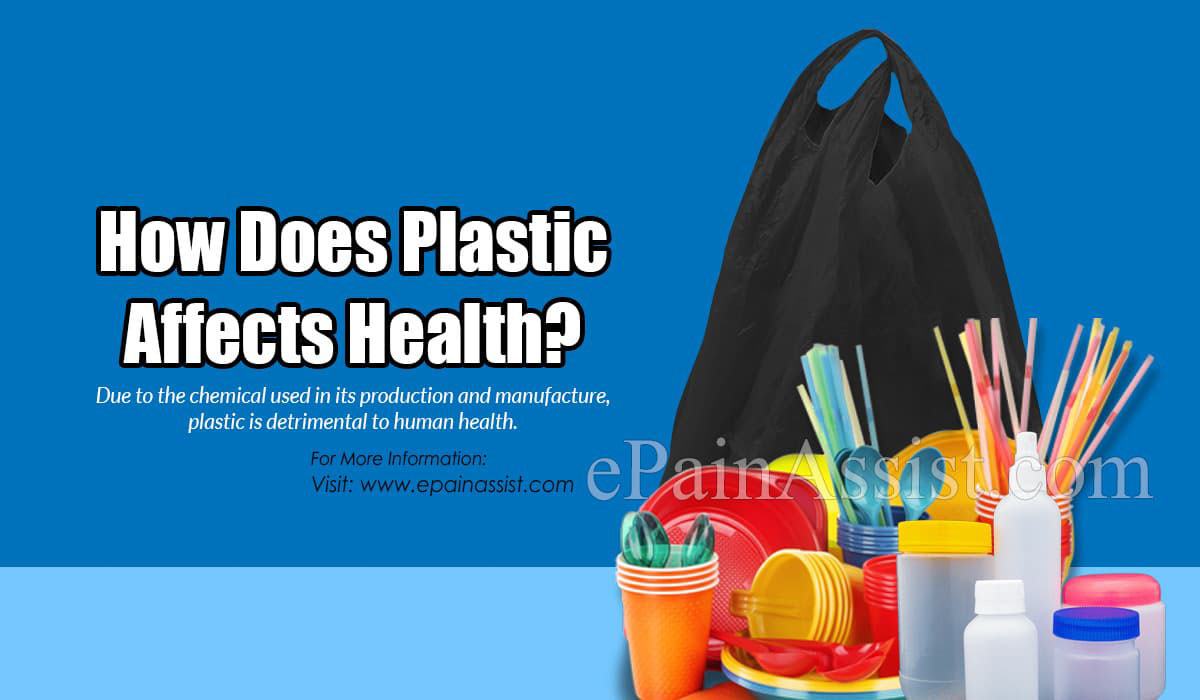Plastic is part of our daily lives. Though nowadays most of the places avoid using plastic, still some way or the other in our daily routine plastics do come in our use.
Due to the chemical used in its production and manufacture, plastic is detrimental to human health. They are softened for cuddle toys and hardened for the plastic bottles using chemicals. Also, to change the color of the plastic toys chemicals are used.
These chemical have negative effects on the environment and human health which include.
Direct toxicity with lead, cadmium, and mercury
Carcinogenic effect with diethylhexyl phthalate (DHEP)
Endocrine disruption leading to cancer, birth defects, immune system suppression, and developmental problems in children(2, 3).

How Does Plastic Affects Health?
The chemicals in plastic migrate from the plastic packaging into the contents. People get exposed to these chemicals not just during the manufacturing, but also by using the plastic packaging, as the chemical migrates from the plastic package to the food they contain. Let’s take a look at how is it harmful,
There are three ways plastic harms human health.
- General environment i.e. through air and water. Plastic has an impact on human health to a greater or a lesser extent. The chemicals present in them harming human health are phthalates (diethylhexyl phthalates-DHEP), Bisphenol A- BPA, and heavy metals such as lead, cadmium, and mercury.
- These toxins move out into the environment during the service life and are unknowingly consumed by humans, either through direct contact with plastic or through the food exposed to them. The microplastic present in the oceans attracts chemicals such as persistent organic pollutants and DDT which get consumed by fish and gets consumed by those who eat these fishes.
- Through seafood. As discussed above, the pollutant gets ingested by the fishes, gets accumulated through the food chain and end-up being consumed by the humans. Fishes such as shell fishes already have a certain level of mercury in them, which is why they are recommended in a very small amount for the pregnant females and children(1). Such toxicities lead to certain health implications such as cancer, impacts nervous and mental development, behavioral issues such as ADHD, and allergies.
- Direct contact with the plastic products such as children coming in contact with the plastic through plastic teethers, pacifiers, toys or by eating the food contained in it(2). Such direct contact is linked with severe health outcomes such as cancer, birth defects, and endocrine disruption.
Chemical in Plastic and How They Harm Health?
Polyvinylchloride PVC. It is used in the food packaging, containers for toiletries, cosmetics, crib bumpers, showers, curtains, toys, inflatable swimming pools, and auto upholstery. This can lead to cancer, birth defects, genetic changes, chronic bronchitis, deafness, indigestion, and liver dysfunction(3).
- Phthalates (DEHP, DINP). Phthalates are found in softened vinyl products including vinyl clothing, emulsion paint, footwear, printing inks, product packaging, food wrap, blood bags and tubing, IV containers, breathing tubes, and many other medical devices. This chemical is linked with endocrine dysfunction, asthma, developmental and reproductive effects. The medical waste containing phthalates and PVC can lead to public health effects because of the release of dioxins and mercury. It can lead to cancer, hormonal changes, infertility, endometriosis, and immune system impairment.
- Polycarbonates with Bisphenol A. This chemical is mostly present in the plastic made bottles. Scientists have linked exposure to low doses of bisphenol A with cancer, diabetes, impaired immune function, hyperactivity, and other problems.
- Polystyrene. The food containers for meats, fish, cheese, yogurt, clear bakery containers, ice buckets, serving trays, throw away hot drink cups are made of plastic containing polystyrene. This can cause health effects such as irritation in eyes, nose, throat, and mouth. It also elevates the rate of lymphatic and hematopoietic cancer for workers.
- Polyethelyne PET. This chemical is used to make plastic for water and soda bottles, drinking glasses, food containers, plastic bags, squeeze bottles, and toys. It is suspected of being a human carcinogen.
- Polyester. Plastic of bedding, clothing, disposable, diapers, food packaging, tampons, and upholstery are made of polyester chemical. This can lead to eye and respiratory tract irritation and also acute skin rashes.
- Urea formaldehyde. This is used for particle board, plywood, building insulation, and fabric finishes. Formaldehyde is a suspected carcinogen(4), and is also known to cause birth defects and genetic changes.
- Polyurethane foam. It is used for cushions, mattresses, and pillows. It can lead to bronchitis, coughing, skin and eye problems.
- Acrylic. Clothing, blankets, carpets are made from acrylic fibers. It can lead to breathing difficulties, vomiting, nausea, weakness, headache, and fatigue.
- Tetrafluoro-ethelyne. It is used in the non-stick coating on cookware, clothes iron, ironing board covers, and plumbing tools. It can cause irritating in eye, nose, and throat and lead to breathing difficulties.
What Can Be Used As An Alternative To Plastic?
To ward away the harmful effects of plastic we should start choosing alternatives to it and the best place is to begin at home.
- Buy food or glass or metal containers and avoid the bottles with BPA
- Stop heating food in plastic containers and even using them for storing food
- Do not give plastic teethers or toys to the kids
- Avoid using PVC and styrene products
